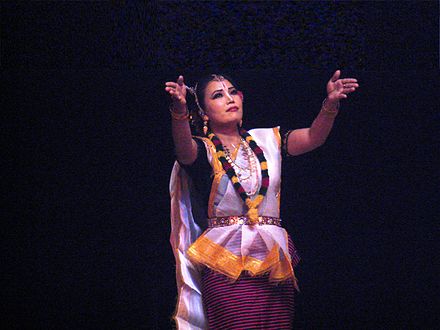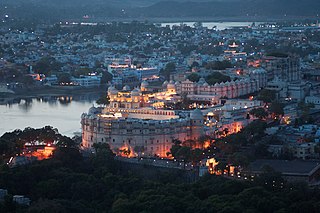
Kohima is the hilly capital city of India's north eastern state of Nagaland. With a resident population of 99,039 it is the second largest city in the state. Originally known as Kewhira, it was founded in 1878 when the British Empire established its headquarters of the then Naga Hills. It officially became the capital after the state of Nagaland was inaugurated in 1963.

Mokokchung (Pron:/ˌməʊkɒkˈtʃʌŋ/) is a town and a municipality in Mokokchung district in the Indian state of Nagaland. It is the district headquarters as well as the main urban hub of Mokokchung district. Mokokchung is the cultural nervecentre of the Ao people and is economically and politically the most important urban centre in northern Nagaland. In fact it is third most important urban hub in all of Nagaland after Dimapur and Kohima. Besides this the Government of Nagaland has also recognised Mokokchung district as 'Land of Pioneers' because this place has produced a great number of luminaries in many fields. The town is made up of 16 wards of which Kumlong, Sangtemla, Alempang and Yimyu are the largest. Mokokchung is particularly noted for its extravagant Christmas, New Year, Moatsu and Tsungremong celebrations. Its tradition of celebrating Christmas and New Year midnight celebrations in the main town square is regarded as one of the unique features of Mokokchung. Historically, Mokokchung was one of the first Naga Hills sites where the Assam Rifles, led by Britishers, established their outposts in the later part of the 19th century. Much of the town initially grew around this post located in the DC Hill. The British administration was then gradually extended eastwards towards the remoter parts of the Naga Hills.
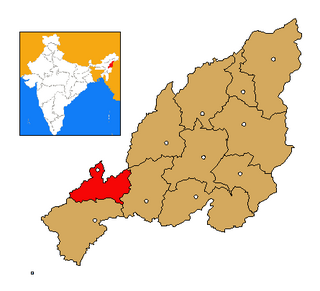
Dimapur (Pron:/ˌdɪməˈpʊə/) is a district of Nagaland state in India. Its headquarters is the city of Dimapur. As of 2011 it is the most populous district of Nagaland.

Mokokchung (Pron:/ˌməʊkɒkˈtʃʌŋ/) is a district of Nagaland state in India. The town of Mokokchung is its headquarters. It is mainly occupied by the Ao Naga tribe who consider it their home. It is bounded by the state of Assam to its north, Wokha district to its west, Tuensang and Longleng district to its east, and Zunheboto district to its south.
The Sangtams are one of the major Naga tribe living in the Tuensang and Kiphire districts of Nagaland.

North Zone Cultural Centre or NZCC in Patiala in Punjab state was first amongst several regional cultural centres established by Government of India to preserve and promote arts, crafts, traditions and cultural heritage of India.
The West Zone Culture Centre in Udaipur, Rajasthan is one of seven Cultural Zones established by the Government of India to preserve and promote India's traditional cultural heritage. The centre works to retain and develop regional cultural resources, including traditional and tribal arts. It is provided with administrative infrastructure by the Government of India.
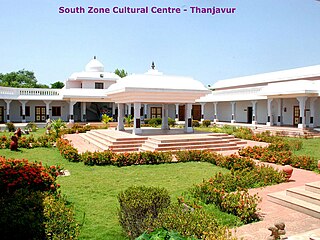
South Zone Culture Centre a autonomous organisation by ministry of culture in Thanjavur at Tamil Nadu state is one of many regional cultural centres established by Indian Government to preserve and promote traditional cultural heritage of India.each zonal center also works to cross-promote and create exposure to other cultural zones of India by organizing functions and inviting artistes from other zones. The current Chairman of the SZCC is the Governor of Tamil Nadu, Banwarilal Purohit. The South zone cultural centre is one of seven Cultural Zones of India defined and provided with administrative infrastructure by the Government of India. Member states of the SZCC are Andhra pradesh, Andaman nicobar islands, Karnataka, Kerala, Lakshadweep, Pudhucherry, Tamil Nadu, Telangana.
The Ministry of Culture is the Indian government ministry charged with preservation and promotion of art and culture.

Temsula Ao is a poet, short story writer and ethnographer. She is a retired Professor of English in North Eastern Hill University (NEHU), where she has taught since 1975.
The Cultural Zones of India are seven overlapping zones defined by the Ministry of Culture of the Government of India to promote and preserve the cultural heritage of various regions of India. Each of these zones has been provided with a zonal centre. Most zonal centres were announced by the then-Prime Minister of India, Rajiv Gandhi, in 1985 and formally began functioning in the 1986-87 period. Their stated goal is "to strengthen the ancient roots of Indian culture and evolve and enrich composite national culture".

The East Zone Cultural Centre has its headquarters in Sector III, IB 201, IB Block, Salt Lake City, Kolkata, which is also known as the Cultural Capital of India and most commonly City of Joy is situated in the Indian state of West Bengal.It is one of the seven Zones established in India.The Indian states which are under the Eastern Cultural Zone are West Bengal, Jharkhand, Bihar, Odisha, Assam, Tripura, Manipur, Sikkim, Andaman & Nicobar Islands. This zone is home to three classical dance Odissi, Sattriya and Manipuri dance. Classical music Odissi music and semi-classical music Rabindra Sangeet.
Sovima Cricket Stadium is a cricket ground in Dimapur, Nagaland. It is the only cricket ground in the eastern state of India.

Shilpgram is a rural arts and crafts complex, situated 3 km (1.9 mi) west of the city of Udaipur, India. The center is spread over an undulating terrain of about 70 acres of land, surrounded by the Aravali mountains. Shilpgram is an ethnographic museum that depicts the lifestyles of the folk and tribal people of the region. With an objective of increasing awareness and knowledge about the rural arts and crafts, the Shilpgram provides opportunity to rural and urban artists to come together and interact through the process of camps and workshops.
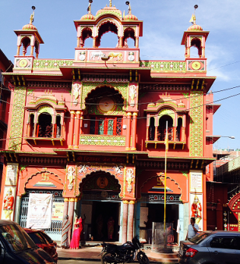
Nagaland, a state in north eastern India has had a long association with Jainism. Today the state has two Jain temples and has become home to hundreds of Jain families living prosperously and peacefully.
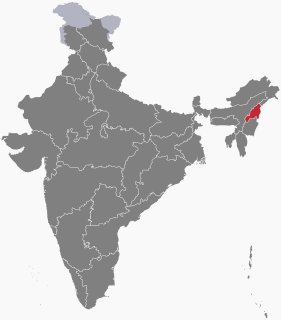
The following outline is provided as an overview of and topical guide to Nagaland:
Trinity Theological College is a college for the Christian Religious Education in Thahekhu, Dimapur.
The South-Central Zone Cultural, Nagpur or SCZCC one of the seven Zonal Cultural Centres in India was established in 1986 with its headquarters at Nagpur. It comprises the linguistically different states of Andhra Pradesh, Karnataka, Madhya Pradesh, Telangana, Chhattisgarh, Goa and Maharashtra. Each of these States has rich traditions of folk, tribal, fine arts and crafts. The Centre strives through its various activities to enrich, promote and strengthen these traditions. The Centre is working under the control of Ministry of Culture, Government of India. The Governor of Maharashtra is the Chairman of this centre.

